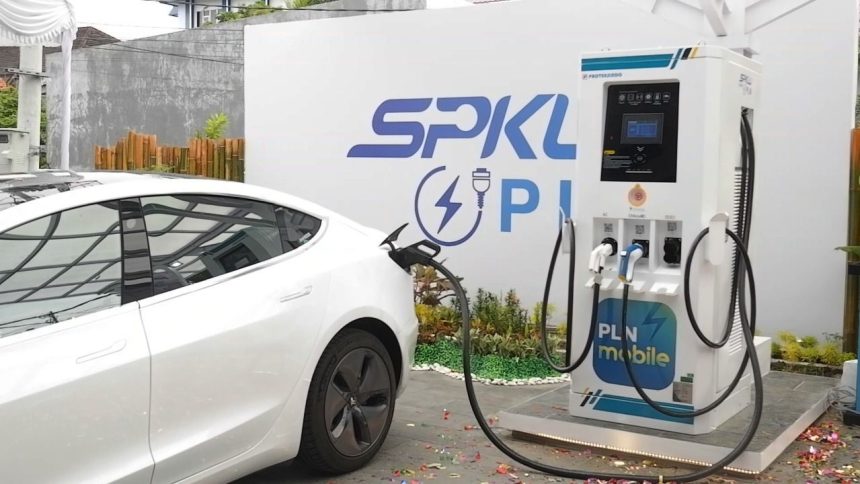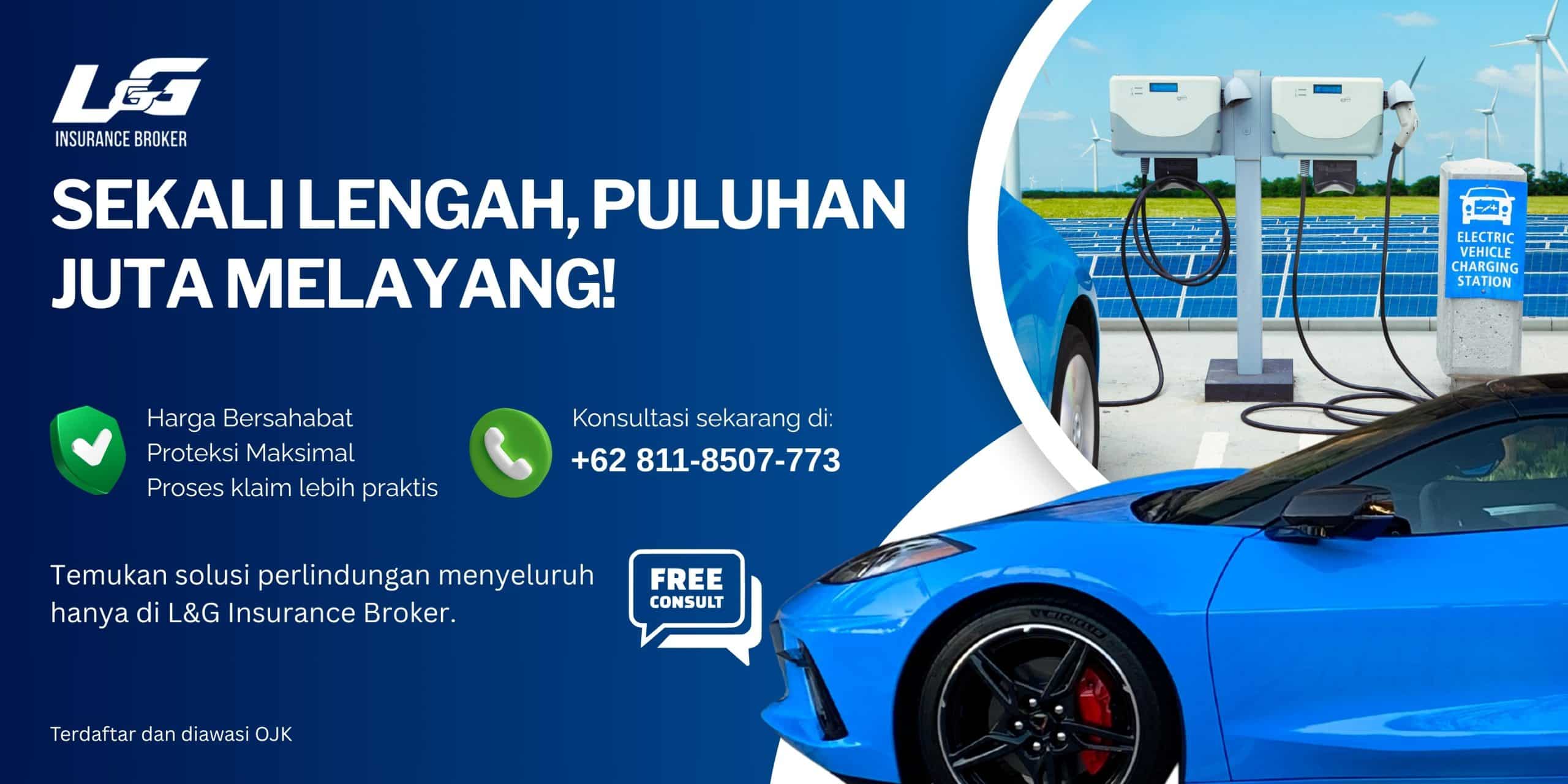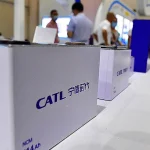Liga Asuransi – Greetings to Automotive Users! Hello, automotive lovers! May you, your family and your business always be in a smooth and successful condition. In this blog, we specifically cover risk management and insurance, helping you understand the importance of financial protection against various risks.
This time, we will review claims electric car insurance, including claims procedures, battery protection, as well as tips to avoid claims being rejected. If you find this article useful, share it with your colleagues so that they too get better insights. Don’t forget, find hundreds of other interesting articles that can help you understand the world of insurance! 🚗⚡
Electric cars are increasingly popular in Indonesia due to increasing public awareness of environmentally friendly vehicles and various incentives from the government. The growth in the number of electric car users is also supported by technological developments and increasing charging infrastructure. However, with the increasing number of electric vehicles on the road, owners must also understand other important aspects, namely electric vehicle insurance and how to claim it.
One of the biggest challenges in electric car insurance claims is battery protection, which is the most expensive component in an electric vehicle. Many EV owners don’t understand whether their batteries are covered by insurance, what the claims procedure is, and the conditions that can cause a claim to be rejected.
The EV insurance claim process has special provisions that are different from fossil fuel cars. Factors such as more expensive repair costs, limitations of specialized workshops, and the risk of short circuits or battery fires are the main considerations in electric car insurance policies.
This article will discuss in depth the EV insurance claims process, battery protection, documents required for a claim, and how to avoid claim denials. By understanding these procedures, electric car owners can ensure that they get maximum protection from their vehicle insurance.
Understanding the Electric Car Insurance Claims Process
Electric vehicle insurance claims have several differences compared to conventional cars. This is due to the more complex structure and technology of electric cars, especially regarding the battery and electrical system. Therefore, electric car owners need to understand the electric vehicle insurance claim procedure so that the process runs smoothly and the claim is not rejected.
Steps to Claim Electric Vehicle Insurance
- Report the incident to the insurance company
- Immediately report the incident to the insurance company within a maximum of 24 hours after the incident.
- Reports can be made via telephone, email, or insurance application if available.
Prepare Claim Documents
- Electric vehicle insurance policy
- Photocopy of STNK and SIM
- Police report if an accident or theft occurs
- Photos of damaged vehicles
- Claim letter signed by the vehicle owner
Inspection by an Insurance Surveyor
- The insurance company will send a surveyor to assess the extent of the damage.
- If damage occurs to the battery or inverter, a more in-depth inspection by a specialist EV technician is required.
Approval of Vehicle Claims and Repairs
- If the claim is approved, the vehicle will be sent to a partner repair shop specializing in electric cars.
- If the car suffers serious damage or total loss, insurance can provide vehicle replacement or compensation according to the insured value.
Claim Payment According to the Policy
- Claim payments will be made according to the provisions of the policy, either in the form of repairs or replacement of spare parts.
- If there are additional costs beyond insurance coverage, the vehicle owner needs to cover them himself.
Differences in Claim Procedures for Electric Cars and Conventional Cars
Special Components:
Electric cars have more complex batteries, inverters and electrical systems and require more in-depth technical inspection.
Workshop Availability:
Partner workshops for electric cars are still limited, so repair times can be longer than for petrol or diesel cars.
Battery Claim Risks:
Not all insurance policies cover battery damage due to use, so vehicle owners need to ensure their policy coverage.
By understanding the electric vehicle insurance claim procedure, EV car owners can be better prepared if an incident occurs. Make sure you have insurance that covers electric car repairs, including protection for batteries and other expensive parts.
Are Electric Car Batteries Covered by Insurance?
The battery is the most expensive component in an electric car, often accounting for 30-50% of the vehicle’s price. Therefore, EV owners need to ensure that their insurance policy includes battery coverage, as replacement costs can be very high. However, insurance coverage for electric car batteries varies depending on the type of policy and the condition of the damage.
Insurance Coverage for EV Batteries
- Accidental Damage
- If the battery is damaged in a collision, high impact or accident, most Comprehensive (All Risk) insurance policies will cover the costs.
- Some insurance companies set a maximum replacement limit, depending on the vehicle’s insurance value.
Damage Due to Short Circuit or Overheating
Damage resulting from electrical faults, short circuits, or overheating may be covered, but it depends on each insurance company’s policy.
If the short circuit occurs due to a factory defect, battery replacement is usually included in the vehicle manufacturer’s warranty.
Battery Theft
Because electric car batteries have a high value, theft is a considerable risk.
Comprehensive policies often cover battery theft, but vehicle owners need to check whether this is included in their coverage.
Cases Not Covered by Insurance
Decreased Battery Capacity Due to Normal Use
- Over time, electric car batteries will experience capacity degradation, but this is not a risk covered by insurance.
- Most EV manufacturers provide a battery warranty of 8 years or 160,000 km, but insurance will not replace it due to normal use.
- Damage Due to Misuse
- If the battery is damaged due to overcharging, using an inappropriate charger, or installation error, insurance usually will not cover the damage.
- This error falls into the category of vehicle owner negligence, which is not included in insurance coverage.
- Battery Discharged Due to Driver Negligence
- If an electric car breaks down because the battery runs out while driving, the costs of evacuation or power replacement are not always covered by insurance.
- Some policies may cover emergency services (roadside assistance), but this is not standard cover.
Types of Policies That Offer Battery Coverage
Comprehensive (All Risk):
It usually covers damage from accidents and sometimes short circuits or theft.
Additional Policies for EV Batteries:
Some insurance companies offer special battery coverage as a rider or add-on, which can cover battery replacement due to non-accidental damage.
To ensure maximum protection for EV batteries, electric car owners should check their insurance policies carefully and consider additional coverage options if necessary.
Required Documents for Electric Vehicle Insurance Claims
Submitting an electric car insurance claim requires a number of documents so that the process runs smoothly and quickly. Electric vehicle owners must understand the required documentation requirements, especially if the claim relates to EV battery damage. If the documents are incomplete, the claim can be delayed or even rejected by the insurance company.
Standard Documents for EV Insurance Claims
Every electric vehicle insurance claim requires basic documents to be prepared, including:
- Original Insurance Policy → The main document showing the protection coverage of your electric vehicle.
- Photocopy of STNK and SIM → As proof of vehicle ownership and fitness to drive.
- Incident Report or Accident Minutes → Required for claims resulting from accidents or losses. If a major accident occurs, a police report is usually required to be attached.
- Photos of Damaged Vehicles → Visual documentation of damage to assist claims assessment by insurance surveyors.
- Proof of Electric Vehicle Ownership → For example, a purchase invoice or leasing document if the vehicle is still in installments.
- Claim Letter from Vehicle Owner → Official letter stating the claim request to the insurance company.
Additional Documents If Claims Relate to EV Batteries
If the claim involves damage or loss of the electric car battery, some additional documents may be required:
- Technical Report from an Electric Car Workshop or Manufacturer
- To ensure that battery damage is not the result of misuse.
- This document is important for claims related to short circuits, overheating, or high impact impacts.
- Certificate from the Dealer or Battery Manufacturer
- If battery damage occurs due to a manufacturing defect, confirmation from the dealer or manufacturer is required before the claim is approved.
- If it is still within the warranty period, replacement is usually carried out by the manufacturer, not by insurance.
- Purchase Invoice or Battery Warranty
Some insurance policies only cover batteries of a certain age, so a purchase invoice is required to ensure service life.
Tips for a faster and smoother claim process
- Make sure all documents are complete and comply with the provisions of the insurance policy.
- Submit a claim within the time specified in the policy (usually a maximum of 24 hours after the incident).
- If necessary, use the services of an insurance broker such as L&G Insurance Broker to help process claims and ensure the documents submitted comply with the requirements.
By preparing complete electric car insurance claim documents, vehicle owners can speed up the claims process and avoid administrative obstacles that can slow down repairs or replacement of spare parts.
How to Avoid Rejection of Electric Car Insurance Claims
Filing an electric car insurance claim can be an easy process if the vehicle owner understands the provisions of the policy. However, it is not uncommon for claims to be rejected for various reasons, ranging from damage that does not comply with the policy provisions to negligence of the vehicle owner. Therefore, it is important to know the factors that cause claims to be rejected and how to avoid them.
Main Causes of EV Insurance Claim Rejection
- Damage Does Not Comply with Policy Provisions
- Insurance policies usually only cover damage resulting from accidents, theft, or other unforeseen events.
- If the battery has decreased capacity due to normal use, the claim will not be approved.
- Damage resulting from misuse, such as using an unofficial charger, will also not be covered by insurance.
- Claim Filed Partially Late Most insurance companies set a maximum claim deadline of 24 hours to 7 days after the incident. If a claim is submitted outside this time limit, insurance has the right to reject it.
- Negligence in Vehicle Use. If the vehicle owner neglects routine maintenance recommended by the manufacturer, the insurance may reject the claim on the grounds of negligence. Another example is allowing the battery to discharge to zero repeatedly, which can damage the battery cells and is considered user negligence.
- Incomplete or Invalid Documents
One of the main reasons claims are rejected is a lack of supporting documents, such as an accident report, vehicle photos, or valid ownership documents.
If the information in the claim document does not match the policy, the claim can be immediately rejected.
Tips so that your claim is not rejected
✅ Read the policy carefully and understand the scope of protection provided → Make sure you know what risks are and are not covered by insurance.
✅ Make sure your electric vehicle gets maintenance according to the manufacturer’s recommendations → Use an official charger, carry out regular servicing, and avoid negligence in using the battery.
✅ Report the incident as soon as possible and complete the claim documents → Do not delay reporting and ensure all required documents have been prepared.
✅ Use the help of an insurance broker such as L&G Insurance Broker → The broker will assist in the claims process, ensure documents are complete, and negotiate with the insurance company so that the claim is approved more quickly.
By understanding how to claim EV insurance and avoiding mistakes that can lead to rejection, electric car owners can ensure that their vehicle gets optimal protection without obstacles in the claims process. 🚗⚡
Case Study of Electric Car Insurance Claims in Indonesia
With the increasing number of electric car users in Indonesia, electric vehicle insurance claims are starting to increase. However, not all claims can be approved easily, because there are terms and conditions that must be met. Below are some examples of real cases of electric car battery insurance claims that show how insurance can cover or deny claims depending on the cause of the damage.
Case 1: Battery Replacement Claim Due to Accident
A Hyundai Ioniq 5 owner was involved in a traffic accident that caused severe damage to the EV battery. After submitting a claim to the insurance company, they carry out a technical inspection and verification of the condition of the vehicle. Because the car was covered by an All Risk policy, which covers damage resulting from accidents, the claim was approved.
Total battery replacement cost: IDR 250 million
All costs are covered by insurance, according to the policy coverage.
Claim processing time: 2 weeks, including checking and installing a new battery.
Case 2: Claim Rejected due to Damage Due to Usage
A Tesla Model 3 owner filed a claim for a battery that experienced a drastic reduction in capacity after several years of use. The owner hopes to get a new battery replacement through insurance, considering the price of batteries is very expensive.
However, after review by the insurance company, the claim was rejected for the reasons:
- Degradation of battery capacity due to normal use is not included in insurance coverage.
- A decrease in battery performance is normal, so it is not categorized as damage resulting from an accident or unexpected event.
- Owners are directed to submit a claim to the car manufacturer if the battery is still under warranty.
Case 3: Electric Car Battery Theft
A Nissan Leaf owner experienced a theft incident in a public parking lot. The car battery was stolen, which rendered the vehicle completely unusable. Luckily, the owner had opted for an insurance policy that included protection against parts theft.
The claim was approved after the investigation and police report was confirmed.
However, the claim process takes more than 3 weeks because replacement batteries must be ordered directly from the manufacturer.
Insurance covers all battery replacement costs according to the coverage value in the policy.
From this case study, it appears that electric car insurance can cover battery claims if the cause is in accordance with the provisions of the policy. However, damage due to normal wear and tear is not covered, and theft may take longer to process a claim. Therefore, electric vehicle owners should choose a policy with comprehensive protection and understand the claim requirements so that they do not experience difficulties when submitting a claim in the future. 🚗⚡
Conclusion
Electric car insurance claims have special procedures, especially related to EV battery protection which is the most expensive component in electric vehicles. Because the price can reach 30-50% of the vehicle’s value, the battery requires special protection in the insurance policy so that the car owner does not incur large costs in the event of damage or theft.
However, not all types of battery damage can be claimed. Insurance usually covers batteries damaged by accident, fire, or theft, but reduced capacity due to normal use is not included in the insurance coverage. Therefore, electric vehicle owners need to clearly understand the contents of their insurance policy to avoid claim rejection.
In order for the claims process to run smoothly, electric car owners must prepare complete documents and immediately report the incident according to the policy provisions. Documents such as incident reports, photos of damage, technical reports from workshops, and proof of vehicle ownership are very important to speed up claim approval.
To get optimal protection at the best price, EV owners can use the services of an insurance broker such as L&G Insurance Broker. With experience in electric vehicle insurance, L&G Insurance Broker can help you choose a policy that suits your needs, and simplify the claims process with professional support.
🚗⚡ Don’t leave your electric car without proper protection! Contact L&G Insurance Brokers now for a free consultation and get the best deal on your electric vehicle insurance.
Looking for insurance products? Don’t waste your time and contact us now
HOTLINE L&G 24 JAM: 0811-8507-773 (CALL – WHATSAPP – SMS)
Website: lngrisk.co.id
Email: oktoyar.meli@lngrisk.co.id
—
















